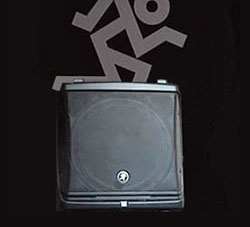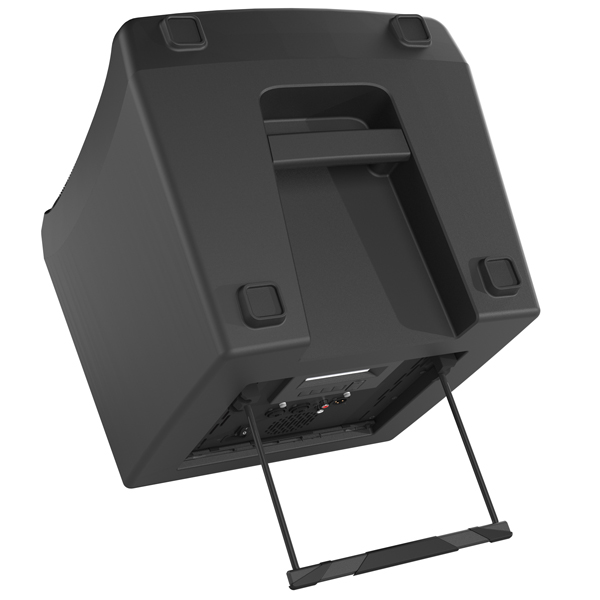
Plenty Of Options
After unpacking the units, I quickly found that I didn’t need the read the included guide to figure out how to wire and operate the boxes, because everything is logically laid out and well labeled. With lots of inputs and outputs I found I had the option of running signal to the top box and jumping to the sub, or running a full range signal to the sub and jumping up to the DLM8.
By itself, the DLM8 sounds fantastic. The detail and clarity are really nice, also impressing a number of folks who stopped by my shop to have a listen. Further, they sounded quite good even to the far sides of the coverage pattern (90 degrees conical).
The selection of effects sound quite good, and I think a soloist or duo would be able to use many of the effects live except for one thing. There is no way to switch between effects or turn them on and off remotely, so a performer would have to go over to the PA to make any adjustments during a show. A footswitch to switch the effects on and off would be a useful addition.
I added a DLM12S sub and found that the pair really sounds great together. The sub offers the ability to set the crossover to any point between 60 Hz and 120 Hz, a range should satisfy most users. While not earthshaking, this little box does very well at producing coherent, impactful low end. Using the pole, the DLM8 was a breeze to mount on top of the sub.
In The Real World
The first gig I used this package was a small corporate event, where crowds of about 50 were expected for each session, with chairs provided for double that just in case. Normally I would have deployed a 2-way, 15-in box or a 10-in coaxial with a small sub for this type of gig, so the DLM was the right fit.
One minor nit: the IEC power cord is a little too short when using the DLM8 high up on the pole. I like to position my mains a little higher at “corporates” to avoid blasting anyone who happens to walk in front of the loudspeakers.
My original intention was to place an AC quad box behind each stack for power, but now I would have to expose the quad box and tape it to the pole—a little too unsightly. I carry a few spare IEC power cables and found two that were long enough to reach the floor behind the subs. (A very short extension cord would also have solved the problem.)
The program material consisted of spoken-word presentations, PowerPoint audio, and tracks from my playback system. The cabinets sounded great with all the various sources, and made a very compact and nice looking set up, which is almost as important as audio quality on corporate shows.
The next show was a jazz quartet in a ballroom. Because of the odd shape of the room, I placed one stack next to the band and the other about 20 feet away at a corner where the room widened out to the right. Having the built-in delay made it easy to time-align the second stack to the first, and I just did it by ear (along with an estimate of the distance).
The band really liked the compact cabinets and wished that they had been available last year when they upgraded their system. Both instruments and voices sounded very natural.
Overall, I think these are great boxes. Most of my clients prefer smaller-sized cabinets that are clean looking, and these sure fit the bill. The DLM package is also perfect for working musicians, both sonically and in terms of size/weight. And if Mackie were to offer a larger sub, I could see it appealing to DJs and others who need a bigger low end.
Anyone looking for a compact, highly featured, great-sounding rig should definitely put the DLM Series on the list.
U.S. MSRP is $879.99 for the DLM8, $1,059.99 for the DLM12 and $1,249.99 for the DLM12S
Craig Leerman is senior contributing editor of ProSoundWeb and Live Sound International, and is the owner of Tech Works, a production company based in Las Vegas.

